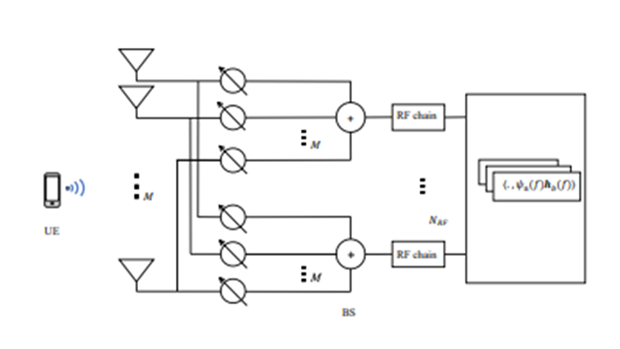Wideband Millimeter-wave OFDM Uplink with Hybrid Receiving.
Objective
The main objective of this project is to construct an OFDM uplink transmitter for data uplink.
Abstract
The uplink transmission of millimeter-wave orthogonal frequency division multiplexing with a broad bandwidth and hybrid receiving is investigated in this research. The spectral efficiency of the system is examined by taking into account the spatial- and frequency-wideband effects in the channel model. The beam squint effect generated by wideband effects is visible in the analysis and simulation findings. Furthermore, the effects of bandwidth and subcarrier count on the beam squint effect are highlighted.
Keywords—Millimeter-wave (mm-wave), wideband, beamsquint, orthogonal frequency division multiplexing (OFDM), hybrid.
NOTE: Without the concern of our team, please don't submit to the college. This Abstract varies based on student requirements.
Block Diagram

Specifications
Software & Hardware Requirements:
Software: Matlab 2018a or above
Hardware:
Operating Systems:
- Windows 10
- Windows 7 Service Pack 1
- Windows Server 2019
- Windows Server 2016
Processors:
Minimum: Any Intel or AMD x86-64 processor
Recommended: Any Intel or AMD x86-64 processor with four logical cores and AVX2 instruction set support
Disk:
Minimum: 2.9 GB of HDD space for MATLAB only, 5-8 GB for a typical installation
Recommended: An SSD is recommended a full installation of all Math Works products may take up to 29 GB of disk space
RAM:
Minimum: 4 GB
Recommended: 8 GB
Learning Outcomes
- Introduction to Matlab
- What is EISPACK & LINPACK
- How to start with MATLAB
- About Matlab language
- Matlab coding skills
- About tools & libraries
- Application Program Interface in Matlab
- About Matlab desktop
- How to use Matlab editor to create M-Files
- Features of Matlab
- Basics on Matlab
- Basics of wireless sensor networks
- About Leach protocols.
- How system modal can be formed in Matlab.
- Construction of algorithm according to system modal
- Analyzing and visualization of plots.
- About WSN lifetimes.
- About cluster heads and aggregators.
- About data transmission in-between nodes.
- Phases of data transmission:
- Generation of input data
- Construction of WSN nodes
- How to extend our work to another real time applications
- Project development Skills
- Problem analyzing skills
- Problem solving skills
- Creativity and imaginary skills
- Programming skills
- Deployment
- Testing skills
- Debugging skills
- Project presentation skills
- Thesis writing skills





 Paper Publishing
Paper Publishing
